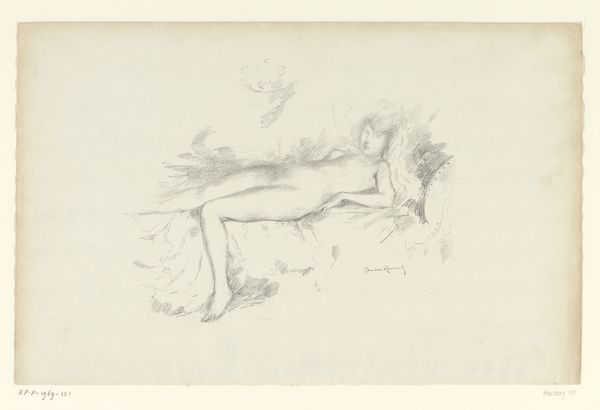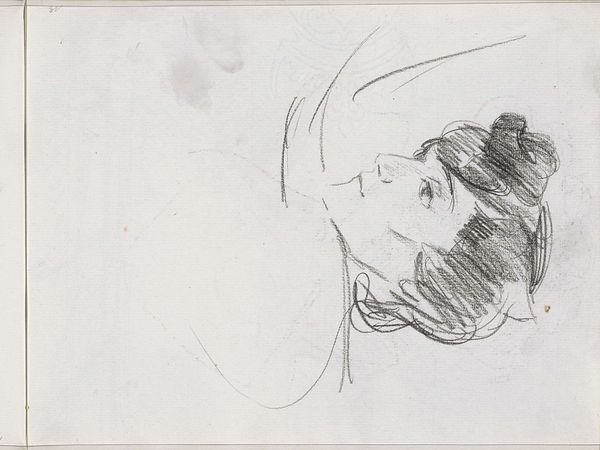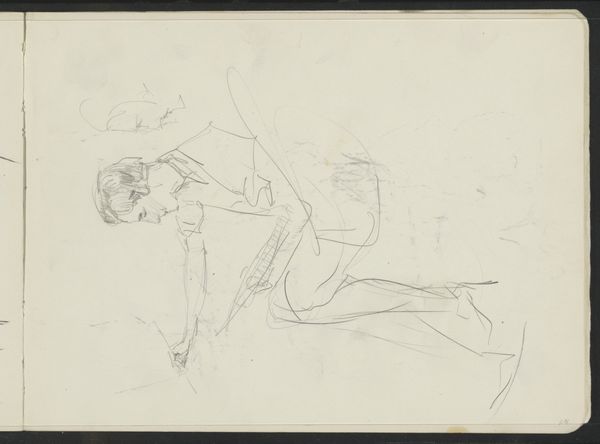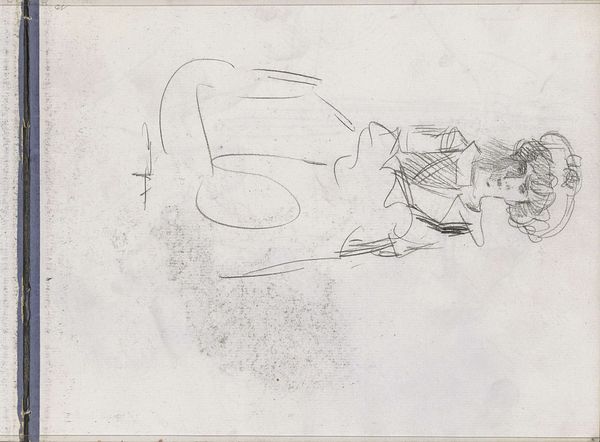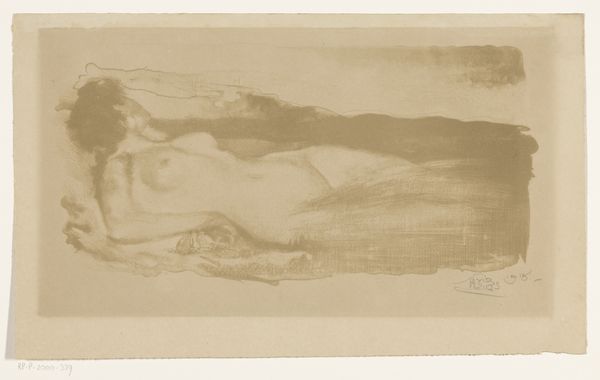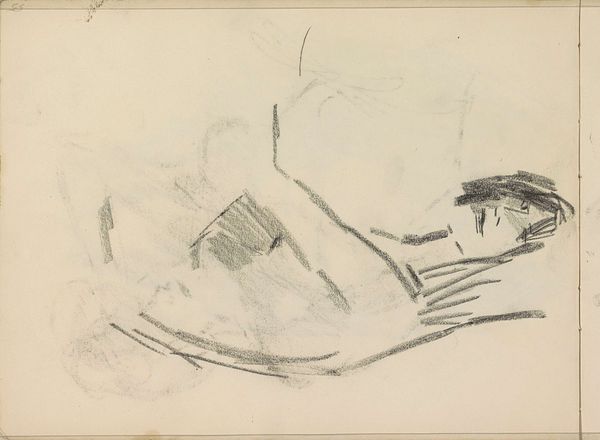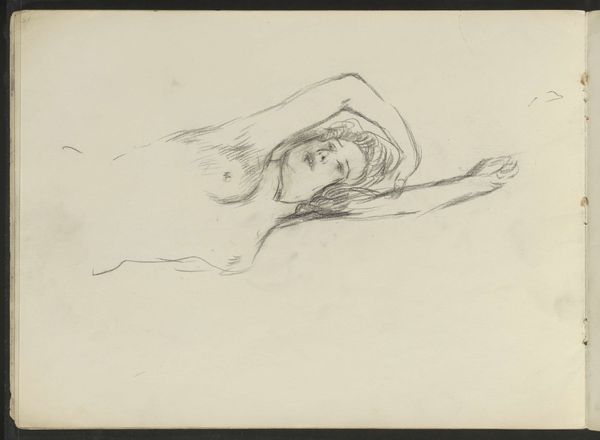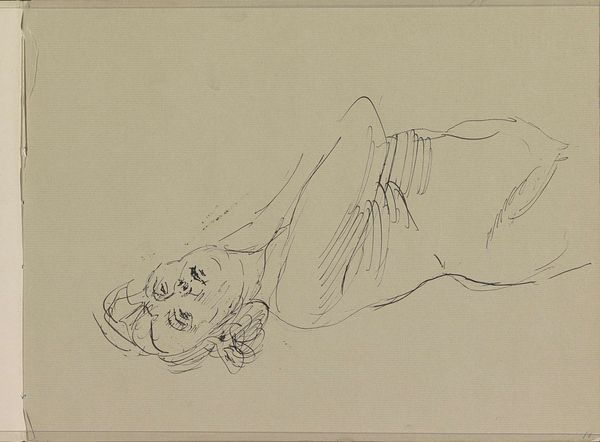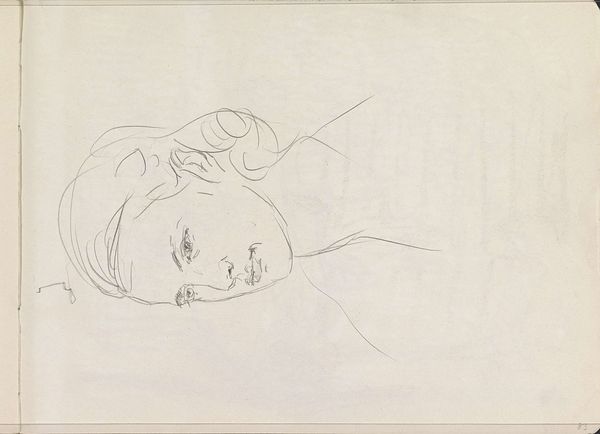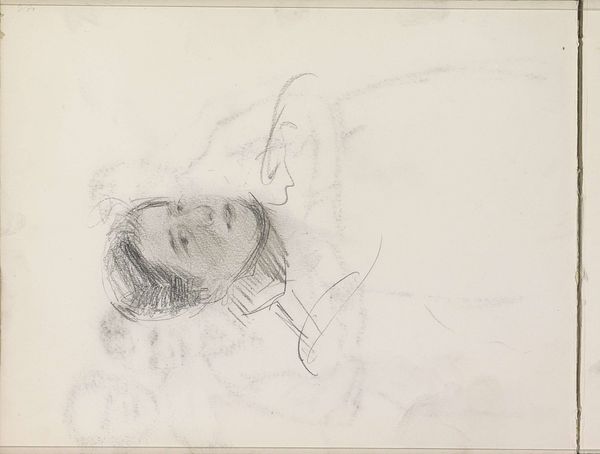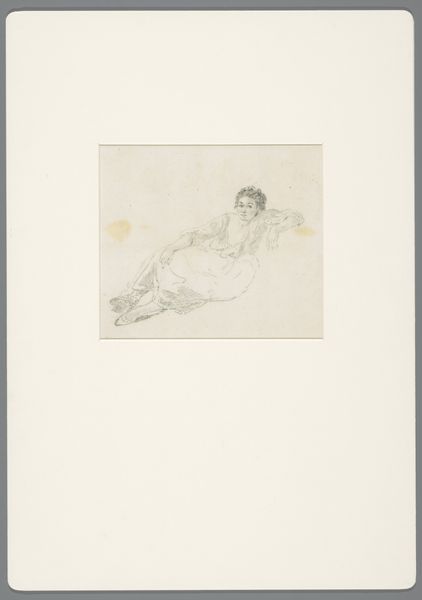
drawing, paper, pencil
#
portrait
#
drawing
#
pencil sketch
#
figuration
#
paper
#
child
#
pencil
Copyright: Rijks Museum: Open Domain
Curator: "Kind dat met het hoofd op de linkerarm leunt," a drawing crafted with pencil on paper, is attributed to Bramine Hubrecht, and the dating places it somewhere between 1865 and 1913. Editor: The first thing that strikes me is the quiet vulnerability of this sketch. The pose—a child resting, head in hand—feels intimate, almost melancholic. Curator: Yes, it’s a portrait but I am also stuck by how a seemingly simple drawing of a child is steeped in complex social power dynamics of the time. Hubrecht, as a woman artist, was potentially engaging with a different understanding of childhood. How can her identity affect our interpretation? Editor: Interesting. From a purely formal perspective, the artist’s restraint amplifies that feeling. The delicate hatching, the way she suggests form with minimal lines…it directs the eye immediately to the child's face. It brings this innocent vulnerability that’s really compelling, structurally. Curator: Thinking about representation, how did ideas around race, gender, and class play out for young children in Dutch society at the time? This work could open conversations about childhood and historical expectations placed on those who would later need to carry society on their shoulders. Editor: Certainly. The composition's emptiness on one side—negative space intentionally unbalanced—really pulls at something. It adds to the quiet introspection, isolating the child. Hubrecht expertly uses the sparseness to evoke an almost dreamlike quality. Curator: I find myself thinking about the historical positionality of Hubrecht and how her work perhaps speaks to an alternate vision of care, or perhaps critique, through the seemingly simple act of capturing this moment. It is really inviting us to unpack childhood. Editor: Indeed. What at first glance seems like a simple sketch opens up to layered analysis of composition, mood, and societal impact. Curator: It really underscores how even a drawing can function as a significant reflection of an era’s cultural and political dialogues.
Comments
No comments
Be the first to comment and join the conversation on the ultimate creative platform.
